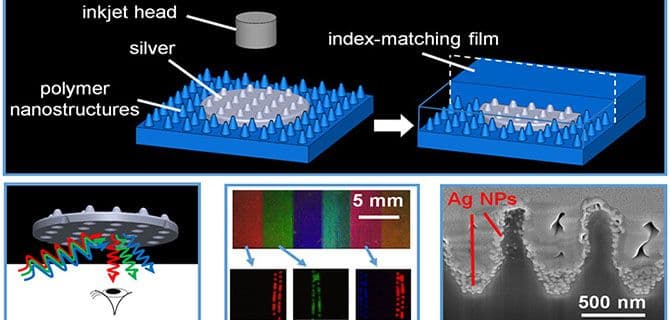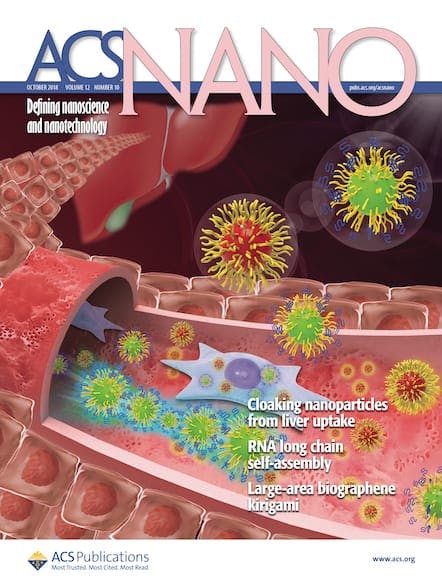Chemical & Engineering News covers the world of chemistry, from research and education to business and policy. Here’s a sampling of their coverage of research from ACS journals: *** Nanoparticle Ink Opens Up New Printing Possibilities Researchers have found a way to add iridescent colors to nanopatterned polymer sheets using ink containing silver nanoparticles. An […]

Chemical & Engineering News covers the world of chemistry, from research and education to business and policy. Here’s a sampling of their coverage of research from ACS journals:
***
Nanoparticle Ink Opens Up New Printing Possibilities
Researchers have found a way to add iridescent colors to nanopatterned polymer sheets using ink containing silver nanoparticles. An inkjet printer is used to apply an alcohol-based ink carrying the nanoparticles, with small variances in a pattern stamped into the polymer determining the color. The ink-coated pattern produces the different hues by interfering with specific wavelengths of light, resulting in more durable, fade-resistant colors that could be used to authenticate important documents such as passports.
- Read the story in C&EN.
- Read the research in ACS Nano.
***
Using to Light to Control Pain Relief
On-demand pain relief could get a little simpler and safer, thanks to the development of phospholipid sacs that can release small amounts of local anesthetic when targeted with a beam of near-infrared light capable of penetrating tissue. The surface of the sac is covered in gold nanorods that absorb the light, causing the sac to heat and expand slightly, releasing anesthetic. The use of a new lipid that breaks free of the membrane when heated allowed researchers to come up with a version of the treatment that only requires about a minute of exposure to the light, preventing tissue burns.
- Read the story in C&EN.
- Read the research in Nano Letters
***
Reducing Coal Power Lowers Local Atmospheric Mercury Levels, Study Finds
Regulating and reducing the number of coal-fueled power plants in the northeastern U.S. reduced local mercury concentrations in the air over the past two decades. New research shows that mercury levels in the air are primarily affected by local conditions and not global phenomena. Reductions in atmospheric mercury are slow, however, with mercury levels declining between 2% and 8% per year over the period examined in the study.
- Read the story in C&EN.
- Read the research in Environmental Science & Technology Letters.
***
Human-Plant Hybrid Cells Shed Light on Evolution
Newly-created human-plant hybrid cells may help scientists understand how evolution has affected the functions of chromosomes. Researchers placed plant chromosomes in human bone cancer cells, and observed that the machinery for cell division and gene expression has been conserved between plants and humans, despite the evolutionary distance between the two. These findings could help researchers develop a better understanding of how to manipulate plant chromosomes, which could have agricultural uses.
- Read the story in C&EN.
- Read the research in ACS Synthetic Biology.
***
Using a Sensor to Sniff Out Spoiled Meat
A new sensor could “smell” rotting meat long before the odor is detectable to humans. The device uses strips that change color in the presence of four common gases released when bacteria break down compounds in meat, allowing detection at the parts-per-billion level. Researchers say the technology could reduce food waste, as well as food-borne illness.
- Read the story in C&EN.
- Read the research in ACS Sensors.
***
That’s just a small sample of the robust coverage C&EN provides. Get the latest news in your discipline with weekly e-mail updates.
